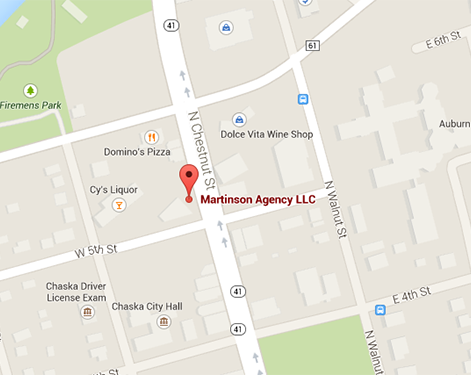How to Create a Home Inventory
December 13th, 2018 :: Martinson Agency LLC :: Chaska, MN
The idea of creating a home inventory can be daunting. According to the National Association of Insurance Commissioners (NAIC), 59% of consumers do not have an inventory list of their possessions, 27% do not have photos of their property, 28% do not have a backup copy in a secure location and 59% have not updated their inventories in over a year.
There are many reasons why homeowners and renters should spend time creating an inventory. First, you can be more confident that you have the proper amount of coverage by having a list of what you own and how much it might cost to replace. Second, if you need to file a claim, having a properly documented inventory will make the process much simpler. Finally, if you are a victim of a burglary an inventory can greatly increase your chances of recovering your belongings.
Tips For Creating Your Home Inventory
The main thing to remember when creating your home inventory is to take your time and not get overwhelmed. Being detailed and accurate is far more important than speed.
Here are some tips to help you start — and finish — your home inventory.
- Instead of looking at your entire home at once, cut the job into manageable sections. Start with one area of your home, such as your kitchen or a single closet.
- Break belongings down into categories. For example: List your clothes as shirts, skirts, pants ect. Categorize appliances by their function, like cooking or entertainment. This will help you track what you have and haven’t listed.
- Be descriptive and list details for each item. Color, make, model and price paid are all important if you are trying to replace items that are destroyed or stolen.
- Record serial numbers on any appliances, firearms, watches or other items.
- If you own big ticket items such as artwork, jewelry or collectibles consider having them appraised. You can then list the values in your home inventory. Values can vary greatly over time and establishing current worth will help you avoid being underinsured. Some items (such as a diamond ring) may require a special rider to improve coverage limits.
- Be sure to take pictures or shoot video of the items as you create your inventory. The higher the value of the item the more detailed you should be.
- Keep your list updated. You should be actively removing old items that have been discarded and adding new purchases or gifts that you have received.
- Make sure that you have a copy of your list backed up securely. Using a mobile app or a website is a great way to make sure it won’t be lost or destroyed.
It can be a little time consuming to create initially but once you have your inventory complete it is a simple matter of keeping it updated. At minimum review your inventory annually. Be sure to consult with a licensed independent insurance agent at Martinson Agency in Chaska, MN!
Don’t leave your insurance to luck! Call today!
Phone: (952) 314-4400
Email: jphagen@aibme.com
Website: www.martinsonagency.com

 Contact
Contact Email an Agent
Email an Agent

 Click to Call
Click to Call Get Directions
Get Directions

